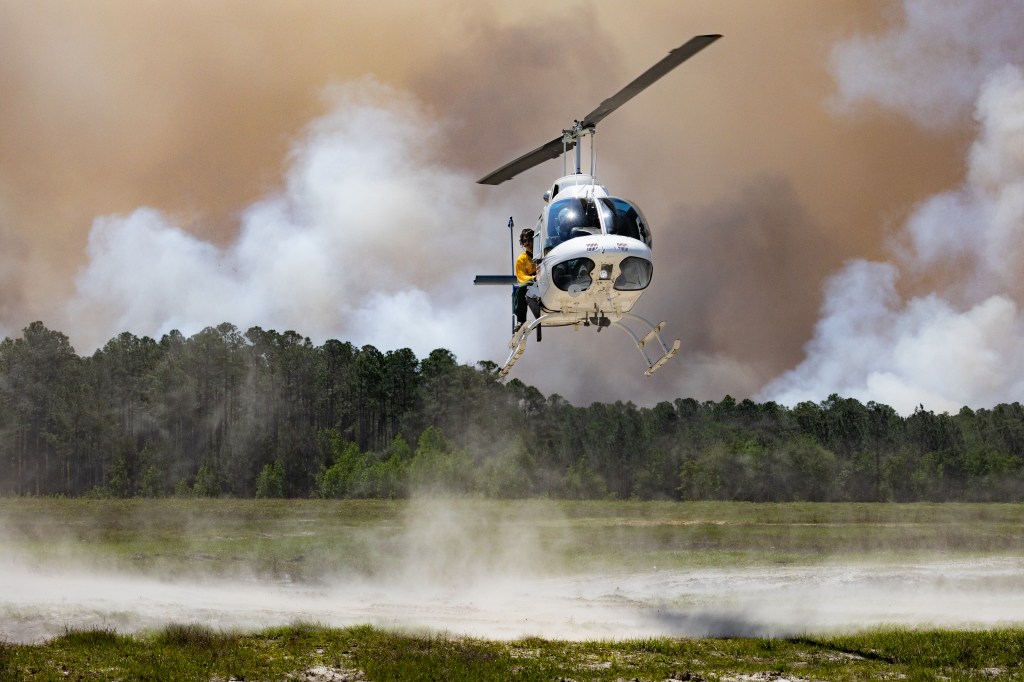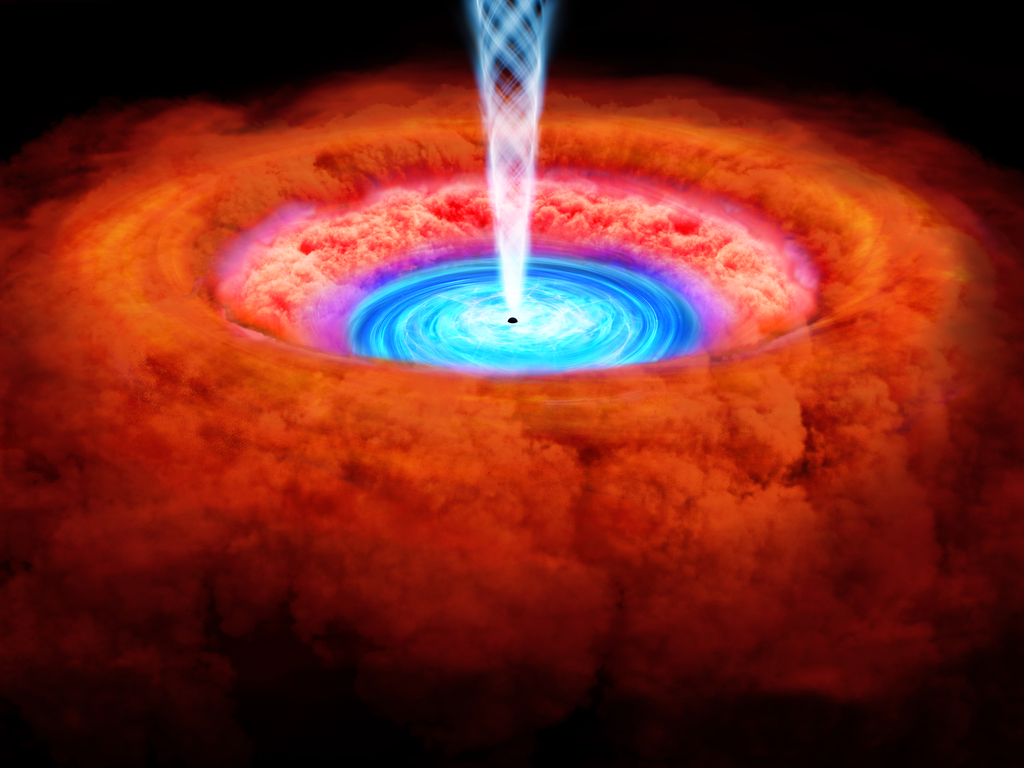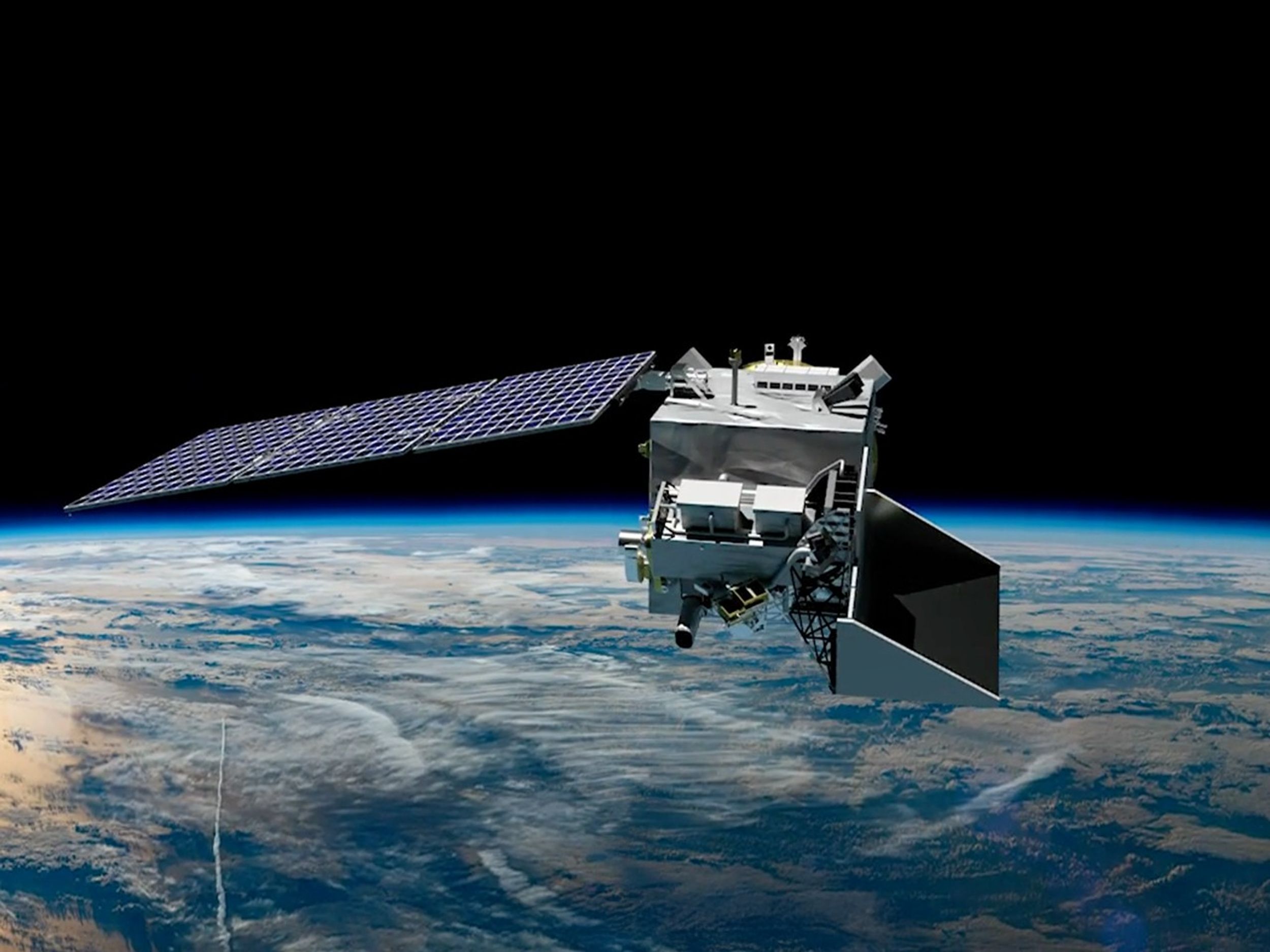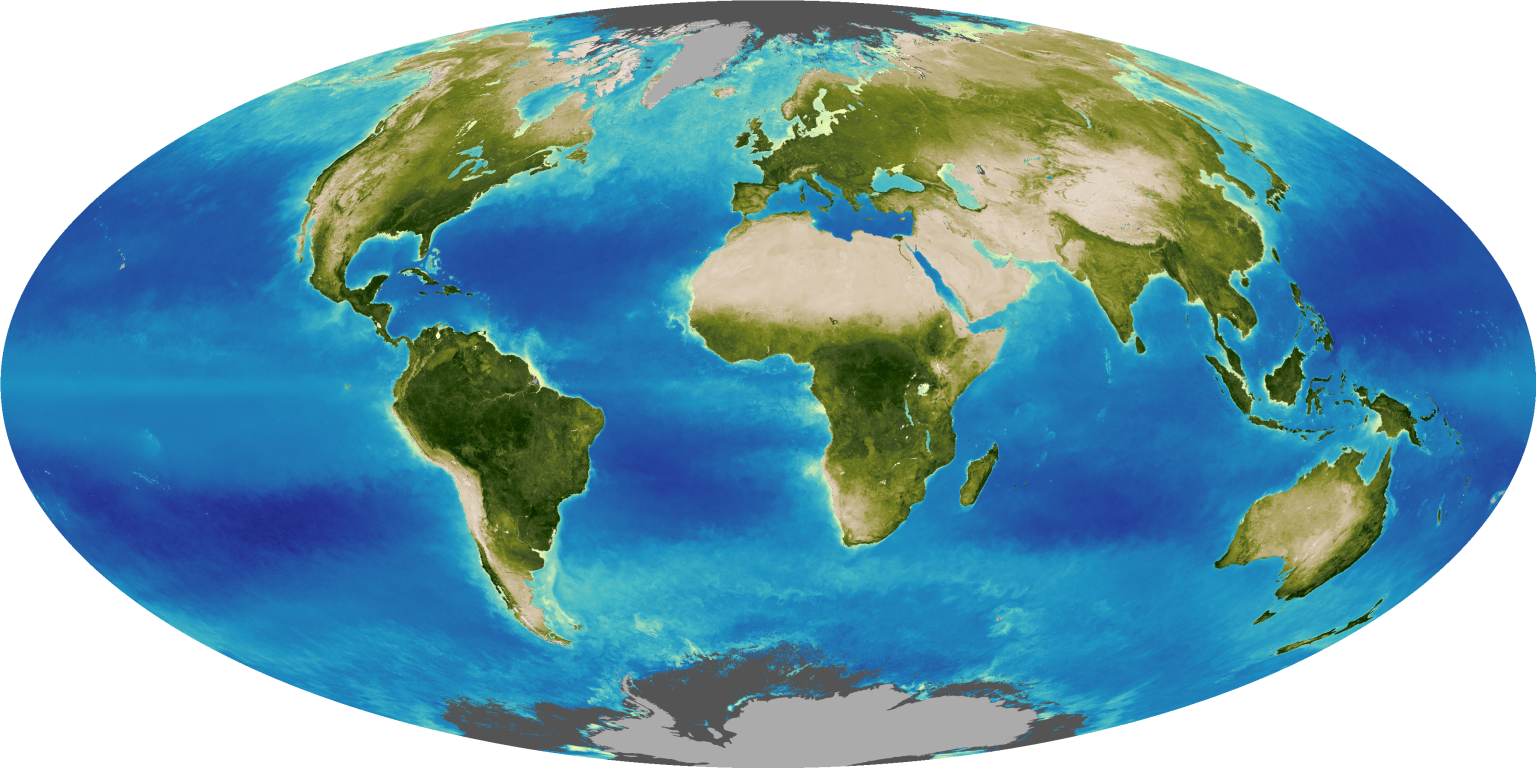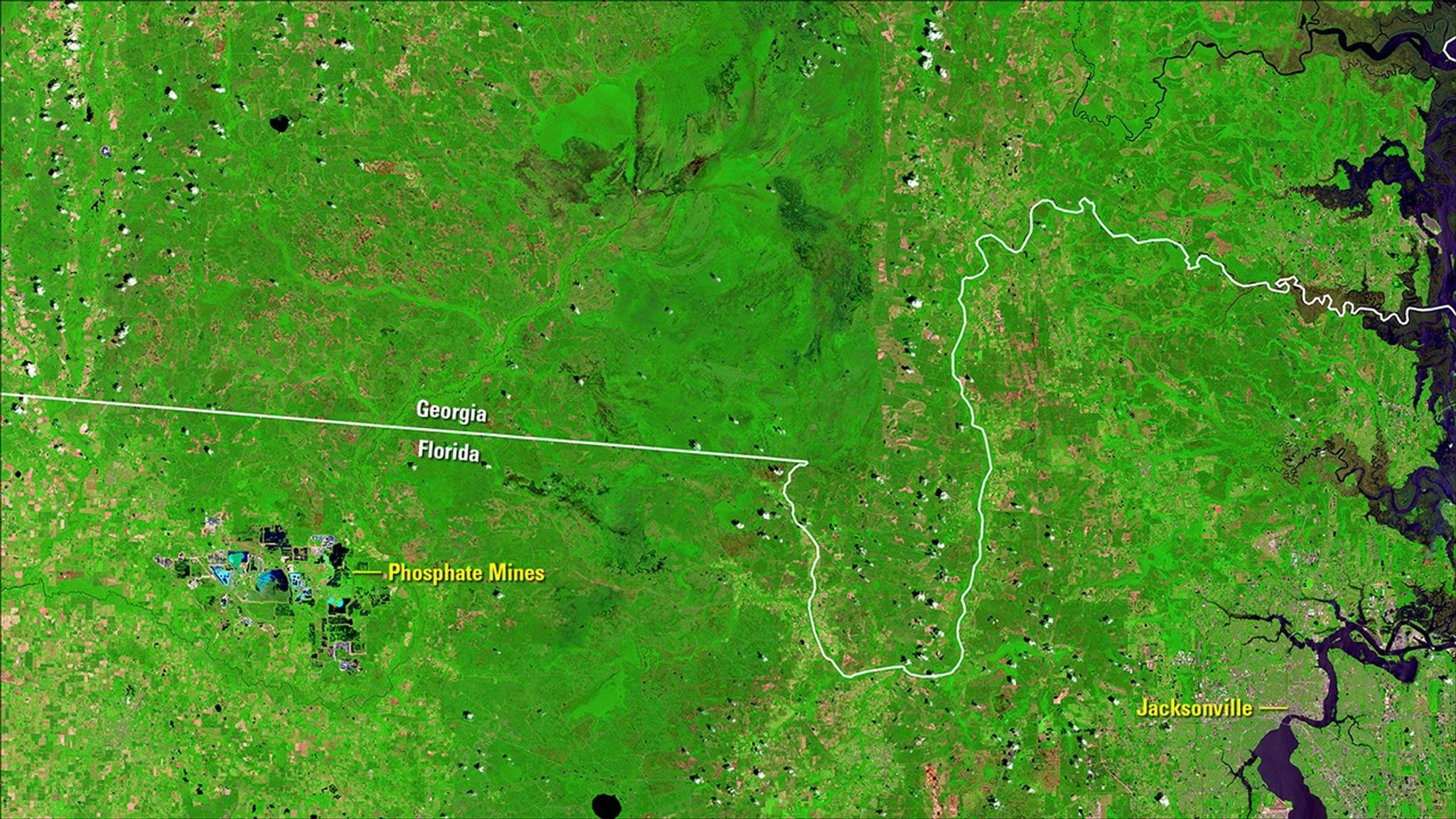
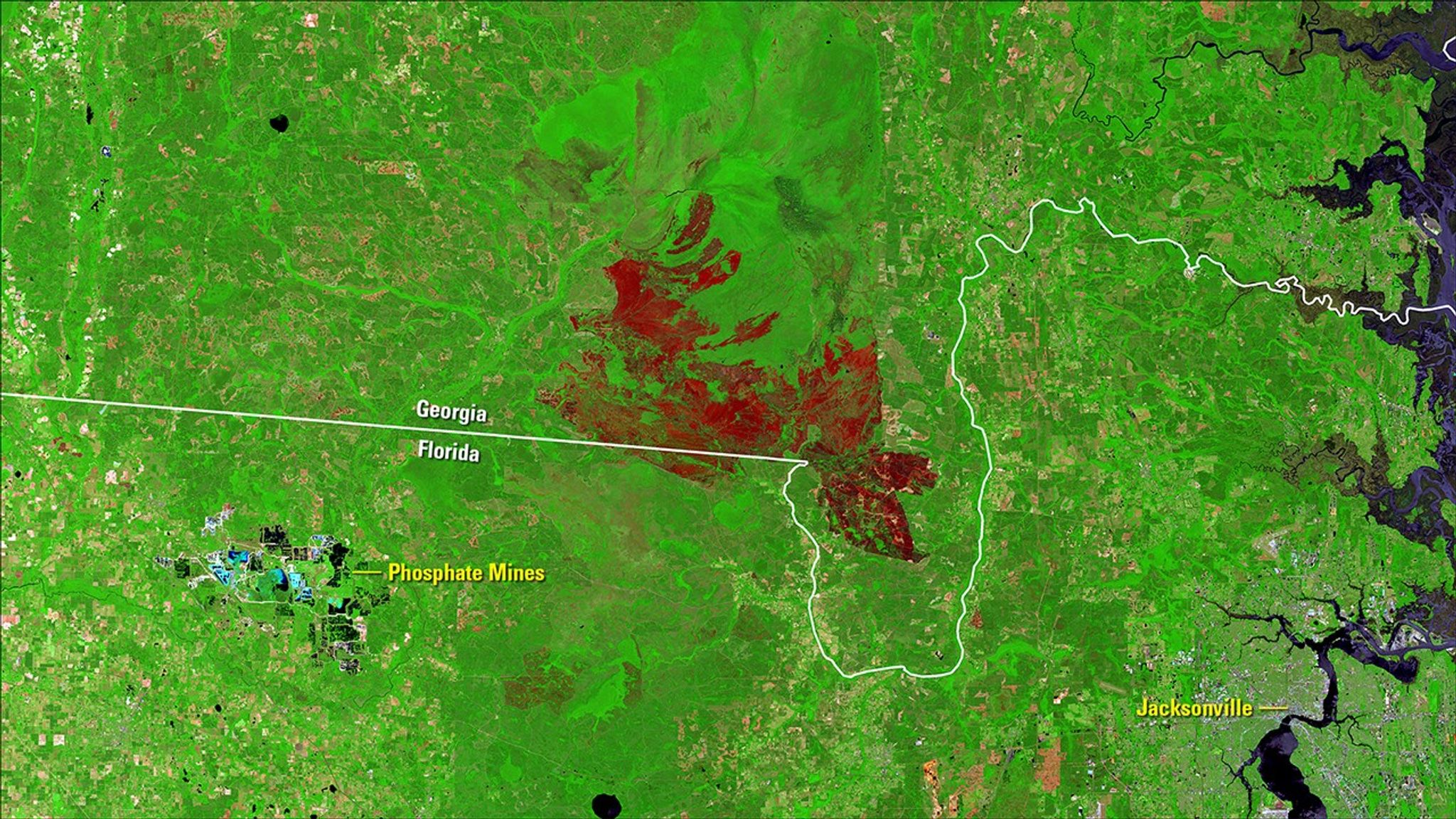
Before and After
West Mims Fire (Florida/Georgia border) continues to burn
April 27, 2016 - May 16, 2017
A lightning-ignited wildfire that started in the Okefenokee National Wildlife Refuge on April 6, 2017, persisted into May. Hot, dry weather and extremely dry fuels made the fire, also called the Okefenokee Fire, difficult to contain. Thick smoke affected nearby communities, its ash reported to have reached Jacksonville, Florida, about 30 miles southeast. Images taken by the Landsat 8 satellite. Source: U.S. Geological Survey (USGS) Landsat Missions Gallery: “Okefenokee Fire Continues to Burn”; U.S. Department of the Interior / USGS and NASA.









